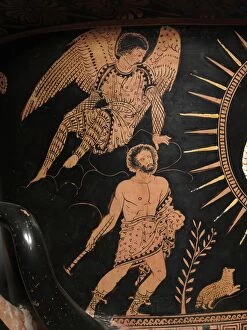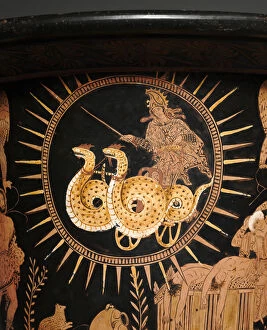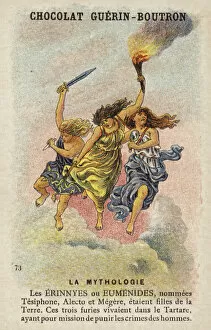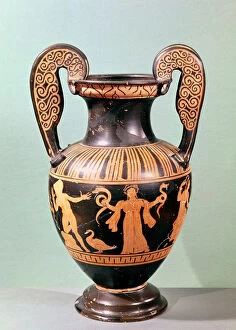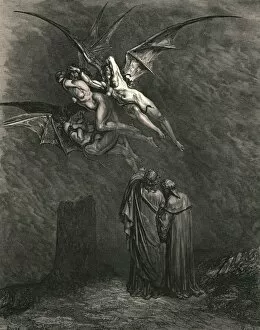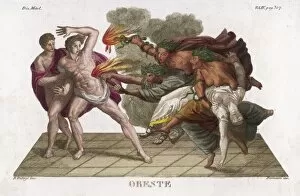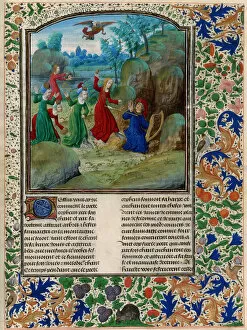Erinyes Collection
The ancient world is filled with mythical tales and deities that have captivated the minds of generations
For sale as Licensed Images
Choose your image, Select your licence and Download the media
The ancient world is filled with mythical tales and deities that have captivated the minds of generations. One such group of goddesses, known as the Erinyes, holds a particularly intriguing place in Greek mythology. Depicted in various artistic forms throughout history, their presence can be seen on Lucanian Calyx-Kraters dating back to 400 BC. These earthenware vessels serve as windows into a time long past, where the stories of gods and mortals intertwined. The intricate designs etched onto these kraters depict scenes from mythological narratives involving the Erinyes. Their wrathful nature is evident in their portrayal; they are fierce and relentless beings who punish those guilty of heinous crimes. One notable representation can be found on the Pergamon Altar, believed to depict either Nyx or one of the Erinyes herself. This grand structure showcases the power and influence these goddesses held over mortal affairs. It serves as a reminder that justice will always prevail, even if it means invoking divine retribution. In another engraving titled "Orestas pursued by the Furies, " we witness Orestas being relentlessly chased by these vengeful spirits for his matricide crime. The intensity captured in this artwork reflects both fear and awe towards these powerful entities. Returning to the Lucanian Calyx-Krater collection, we find multiple instances where artists sought to immortalize these fearsome goddesses through their craft. Each vessel tells its own story - whether it's depicting an individual Fury or showcasing them collectively - all serving as reminders that no sin goes unpunished. Amongst all this darkness lies hope for redemption depicted in an engraving simply titled "Eumenides. " These chromolithographs portray a more serene side of the Erinyes – one where they transform into benevolent protectors rather than avengers. This duality within their character adds depth to their mythological significance.

